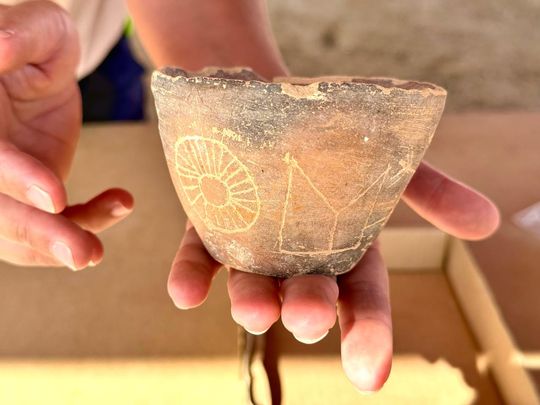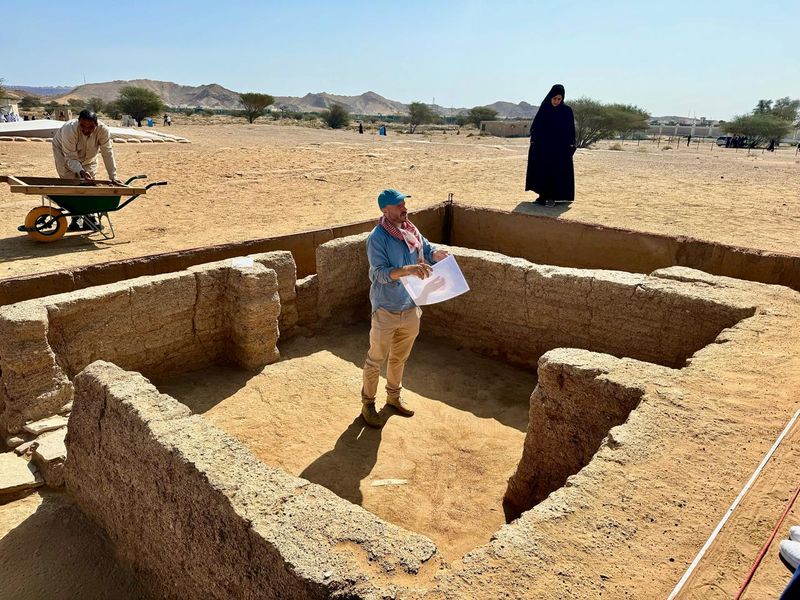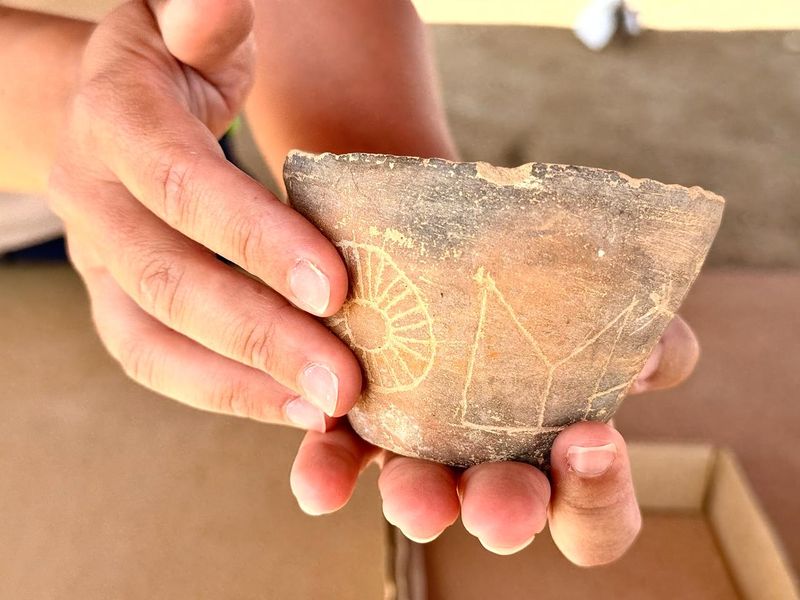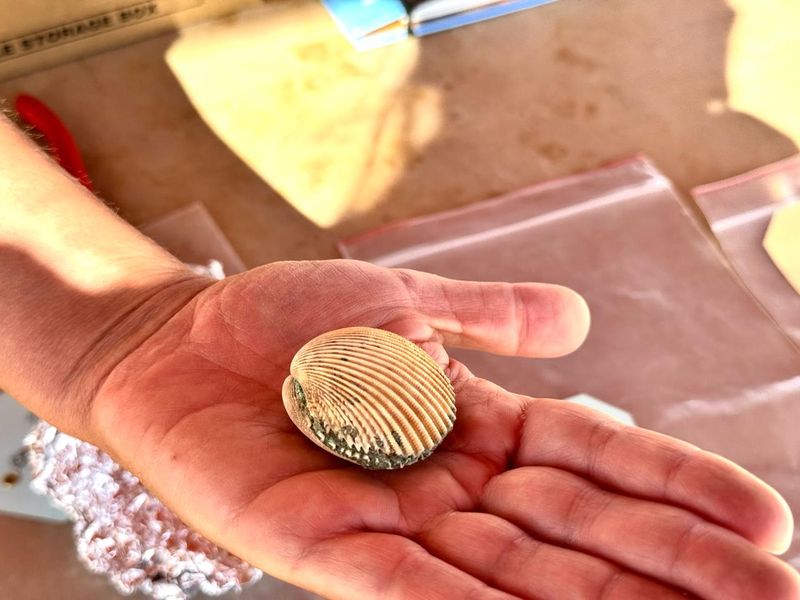
Dubai: In 1,100 BCE, a family lived in a small mudbrick home where they cut sea shells to make beads, and created pottery as a means of sustenance. Today, 3,000 years later, archaeologists are meticulously piecing together the story of this thriving Iron Age village. Imagine families crafting intricate pottery, shaping beads from seashells, and navigating life in a vibrant community.
On Tuesday, February 20, visitors had the chance to experience this ancient settlement for one day only, at the ‘Live Archaeology Open Day’ organised by Department of Culture and Tourism (DCT) Abu Dhabi. As the Hili 14 site at the Hili Archaeological Park is an active excavation site, it is not generally open to public, so visitors had the rare chance to learn from archaeologists and get a glimpse of the recently discovered artefacts on display. Since 2018, archaeological excavations have led to a treasure trove of discoveries, including a well-developed falaj irrigation system, a unique pottery fragment with mysterious iconography and an ancient cosmetic case.
Hili 14 – A glimpse into a thriving Iron Age village
The findings at Hili 14 signify a distinctive period for the Arabian Gulf as well as the UAE. During the Iron Age, camels were domesticated, which led to the expansion of trade routes. The village also developed a falaj irrigation system, by digging up a network of tunnels to bring water to agricultural land. During the guided tour that was given to visitors, archaeologists also highlighted another remarkable discovery at the historical site – a fortified wall with numerous arrowheads scattered, which suggests Hili 14 may have served as a refuge in times of conflict.
An early form of a majlis has also been dug up by archaeologists.
“That would have been a communal building, where people sat down to share some stories, conduct negotiations or discuss their daily lives with other village members,” said Michel de Vreeze, an archaeologist working with DCT Abu Dhabi, told Gulf News.
How houses were made during the Iron Age
Vreeze provided a tour of what could be the home of one family at the settlement and how it had been constructed.
“The house was made from gravelling mudbrick, which was typical during the Iron Age. The house's structure contains two buttresses, and the roof would have been placed on them. The roof was covered with barasti-style palm leaves,” he said.

A historic artefact discovery at Hili 14
From the site, many pottery items like storage jars, bowls and cups have also been found. But one artefact caught the attention of archaeologists during a routine excavation in 2019.
“This is one of the unique pottery fragments in Al Hili, and we haven’t found anything similar like this in the whole Gulf region. There are different images scratched all across the pot, almost telling a story, going around it. We have no writing from the Iron Age, so you could even argue that this is the closest we get to writing during this period,” Sam Botan, an archaeological consultant with DCT Abu Dhabi who specialises in pottery, said.
Although the pot depicts a story, the meaning still needs to be deciphered, according to Botan.

Ancient war arrowheads uncovered at Hili 14
Tatiana Valente, another archaeologist working with DCT Abu Dhabi, who specialises in copper artefacts, recently uncovered the arrowheads around the walls of the village.
“Each of the arrowheads has different sizes and marks, and we are studying them to understand each of their functions. To do this, we use microscopy, which will give us an idea of how they were used and analyse what type of metal was used. We know the arrowheads were made from copper, but we need to know if it was alloyed with other metals or it was made using local copper sourced from the Hajar mountains,” she said.
The reason why Valente wants to know the exact composition of the arrowheads is because, during the Iron Age period, it was common for people to recycle old or broken metals to create items like arrowheads.

A 3,000-year-old cosmetic case
The most recent discovery at the site was a sea shell … that was used as a cosmetic case, to store kohl, the traditional eye cosmetic that people still use today in their everyday makeup routine.
“We will use X-rays to find out if there is still some kohl residue in the case or if it is completely hollow inside,” said Valente.
She explained that with this method, they can also find out its origin, whether it was made locally or whether other materials were imported to create the kohl mix.

Beyond Hili 14
While Hili 14 is currently not open to the public, you can immerse yourself in Al Ain's rich history at the Hili Archaeological Park, a Unesco (United Nations Educational, Scientific and Cultural Organisation) World Heritage Site. Explore Bronze Age and Iron Age remnants, including tombs, houses, and irrigation systems, offering a captivating journey through time.
Plan your visit
Hili Archaeological Park: Free entry, open daily from 9.30am to 6.30pm.
Location: Follow signs for the Hili Area via highways E66, E95, or E22. Once in Hili, take Al Athar Street to reach the park.








